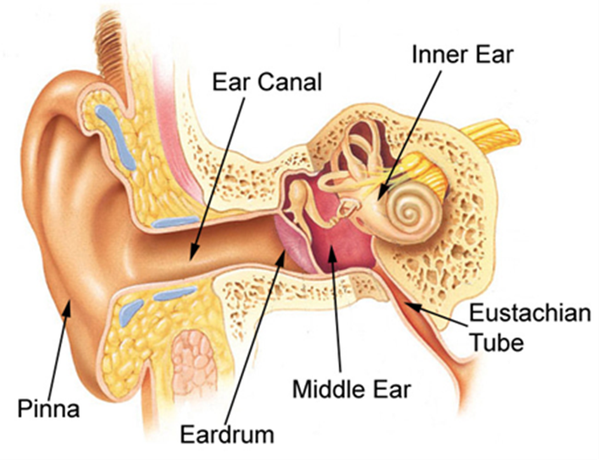Otitis Externa

What is Otitis Externa?
Otitis externa is a condition of the outer ear caused by inflammation of the skin in the ear canal, with or without associated infection. If infective, it could be caused by bacteria or yeasts- fungal infection. This condition can be a single episode, a recurrent condition or a chronic persistent issue.
Common causes
- Getting water in the ear whilst swimming, having a bath or shower as this may allow germs in the water cause infection in the ears or what is also known as “Swimmer’s ears”.
- Getting shampoo or soap into the ear canal can cause irritation of the skin.
- Damage of the ear skin, trauma caused by cotton buds, scratching or fiddling with the ear.
- Hot and humid environment may encourage bacterial growth
- Skin conditions such as eczema or psoriasis
- A wax build up causing irritation or water getting trapped behind the wax build up.
- Wearing ear plugs, hearing aids or head phones preventing ventilation in the ears
- Over the counter drops can cause irritation of the skin of the canals
Dos and don’ts to prevent Otitis Externa
- To avoid getting water, soap or shampoo in the ear when having a bath or shower, place a cotton wool coated with Vaseline in the ear bowl to prevent water entering the ear. Do not push the cotton wool down into the canal.
- Do not stick anything in the ears even when they are itchy, do not use cotton buds.
- Misuse or overuse of over-the-counter eardrops can cause irritation of the skin, if you get discomfort in the ears better get them checked and discuss the use of eardrops with an ENT specialist, GP, nurse.
- Use earplugs if swimming, drops can be used to pervert water trapping in the ears
- Do not have ear syringing or water irrigation if you have inflamed ear canals
- Keep ears dry
Treatment
Your GP may refer you to a specialist for further advice if symptoms are severe or they have failed to respond to treatment. The treatment choice may include antiseptic, antibiotic or antifungal eardrops, steroids drops or a combination of them.
Micro-suction may be required to clear discharge and debris, and sometimes the treatment may require instillation of a cream/ointment in the canal, insertion of a ribbon gauze impregnated in medication or a pope wick. In some cases, oral antibiotics may be prescribed in addition to topical treatment.
Water precautions are paramount in the management of otitis externa to prevent infections caused by waterborne germs.

